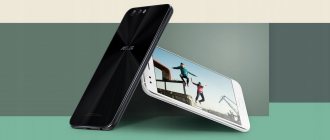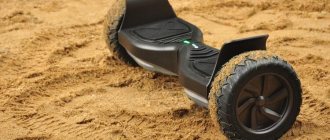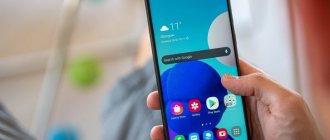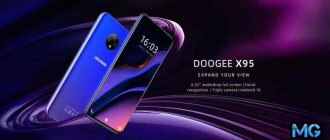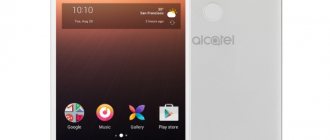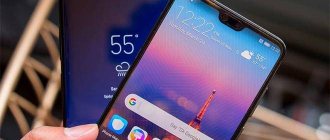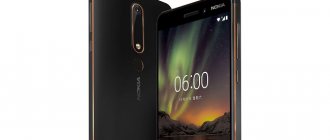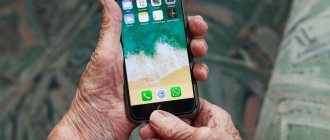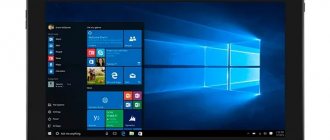Content:
- Can I use a smartphone at school?
- What to look for when choosing a phone for a student? Palm size and core strength
- Battery capacity
- Speed and memory capacity
- Availability and quality of camera
- Price
- Smartphones at low prices with compact sizes
- Smartphones for middle grades (11-13 years old)
realme C3 3/64GB
realme C3 will be of interest to those users who love games. The fact is that realme C3 was equipped with a very powerful MediaTek Helio G70 chipset by budget standards, which is called nothing less than gaming. The amount of memory is not bad - 3 GB of RAM and 64 GB of internal memory.
The smartphone has a large 6.52-inch IPS screen, a powerful 5000 mAh battery, a fingerprint sensor on the back, and a cool design.
On the back of the body you can see a triple main camera. She usually takes pictures.
- Screen diagonal / resolution: 6.52 inches / 1600×720
- Device weight: 195 g
- Processor: MediaTek Helio G70
- RAM / internal memory: 3 GB / 64 GB
- Battery capacity: 5000 mAh
- Camera resolution front / rear: 5 MP / 12/2/2 MP
- Memory card slot: yes
Can I use a smartphone at school?
Last year, Rospotrebnadzor, Rosobrnadzor and the Ministry of Education of the Russian Federation recommended that schools refuse or limit the use of mobile phones by students during lessons.
According to the recommendations, a region, municipality or school can introduce a complete ban on gadgets during lessons (except for those through which the child monitors his health, such as sugar levels) - in which case they will be deposited, leaving only the duty phone with the teacher, or - phones are switched to silent mode and put away in their briefcases until the end of the lesson.
At the end of 2021, according to the Minister of Education Olga Vasilyeva, every fourth school in Russia applied restrictions to one degree or another. Such data emphasize that the recommendations are not mandatory. Whether your school adheres to them and in what form - you need to find out personally.
But even if you can’t use a mobile phone at your school during lessons, your child will need it before and after school in primary school, in clubs, and in any sections. And in middle and high school, the telephone becomes another important means of communication for many children.
There is an excellent alternative for primary and secondary schoolchildren - smart watches with GPS. The gadget performs all the functions of a phone (you can call it or send a voice message), does not interfere with the child’s concentration and is almost impossible to lose. Together with the right application, you can track your child's location through your children's watch and listen to the sound around you. The official online store is currently running promotions that will allow you to save! Moreover, you will receive a license for the “Where are my children” tracker application as a gift.
What to look for when choosing a phone for a student?
Choosing a new phone is not easy even for an adult, but we are talking about a gadget for a child. In high school, children often dream of a specific model, which means you will understand what to strive for both in terms of characteristics and in terms of design (even if there is no money for “that” phone). But what should I buy for a child who has never had a personal phone? Let's define the main criteria for selection.
Palm size and core strength
Manufacturers now offer many phones with large screens. While such models are suitable for high school students, holding such a large gadget in one hand will be inconvenient for a first-grader, which means the risk of breaking a smartphone will increase. So if you wanted to give your child your outdated phone and buy a new one for yourself, check whether it will fit securely in the student’s hand.
By the way, in addition to the size of the phone screen, it also has a resolution, the size of which determines the quality of the picture.
Children are different: some are neat, while others always get things out of hand. If the second is about your schoolchild, pay attention to the strength of the phone case. There is one more point: if the phone is positioned as indestructible or unsinkable, and the child has a high desire to experiment, he will try to break the smartphone.
Take a close look at products with particularly durable cases. And for inexpensive models that are unlikely to pass a durability test drive, purchase a protective cover.
I have two boys 4 years apart. Until the age of 10, I bought reliable push-button phones for children that are difficult to break. But soon, of course, we will switch to touchscreen smartphones, which are important for the lives of high school students, with the ability to communicate comfortably on the Internet and quickly find the necessary information,
– mother Tatyana, 37 years old.
Battery capacity
Battery size is measured in milliamp-hours - most gadgets sold range from 1500 to 5000 mAh. For schoolchildren, 2400 – 3600 mAh will be enough. Of course, the battery is not enough for a mountain hike, but these indicators are enough for a busy school day.
If we are talking about a child’s first phone, teach him to charge the gadget in the evenings, and in the morning check whether the student took it with him. Even adults manage to forget to charge their smartphone or leave it charging in a hurry. But in the case of a child, you will worry that you cannot get through, and the baby will worry that perhaps he has not forgotten, but has lost the gadget.
Losing a gadget is one of the most common concerns of parents. Especially when the phone is not cheap. The “Where are my children” tracker application will help you find your phone if your child has lost it or left it somewhere. With it, you will not only know where the gadget is (and therefore the child himself), but also track the movement history, limit safe zones and listen to the sound around. Download the application from GooglePlay and AppStore right now.
Speed and memory capacity
Primary schoolchildren need a phone that will not freeze or glitch during the simplest actions, such as making a call or setting a calendar reminder. Older students need a device that can handle scrolling through Instagram feeds, surfing the Internet, as well as running applications related to personal interests and games. And don’t forget about constantly synchronizing your phone with a cloud service to restore data if you lose your gadget.
If you expect that the child will not “grow out” of the phone and will not lose it for at least a couple of years, choose “fresh” processors and look at the amount of RAM. In 2021, 1-2 gigabytes of RAM for a modern smartphone is already considered a critical level - such a device will not work quickly with many applications or games, but it will cope with simple tasks for primary and secondary school children.
Older children should take a device with at least 4 GB. Take care not only of RAM, but also of sufficient GB space for storing information. Applications weigh a lot, and if the phone does not have a lot of internal memory, then you need to think about an additional memory card (there should be a special slot on the smartphone for it). The card is especially relevant if your child likes to take photographs or shoot videos. Note that it cannot always be used to host applications.
It is important for the youngest daughter to have a good camera for photos and fast Internet. The eldest son has been choosing his own models since he was 15 years old. Looks at reviews on the Internet and offers me ready-made solutions. Therefore, there are no problems with the choice,
– mother Nadezhda, 45 years old.
Availability and quality of camera
In elementary school, a child can do without a camera, although you still need to try to find a phone without this function. But from 10-12 years old, having a camera will become a sore point. By this time, students are already starting to communicate on social networks. Parents need to calmly accept the fact that children of the 21st century cannot do without selfies, numerous pictures and filming stories. Plus, one photo can save 5-10 minutes of rewriting your schedule or homework.
For ordinary photos, smartphones with 5-8 megapixel cameras are quite suitable. It would not be a shame to paste pictures from a 13 megapixel camera into an album or place them in a family archive.
By the way, most social networks compress photos and videos when uploading, so no matter how cool your camera shoots, the version sent to Instagram or VKontakte will be of lower quality.
Price
Determine the price category available to you. Families have different incomes, and if some are ready to buy their children the latest iPhone model several times a year, then for others, the destruction of a child’s phone worth a thousand rubles will be a serious blow to the budget.
It’s good if the functionality and potential of the device satisfies the child’s basic needs and you don’t have to spend money on a new gadget more than once every two to three years. Depending on the age of the student, we advise you to study offers from the cheapest to 10,000 rubles (or a slightly larger amount).
Take a closer look at the lines of Nokia, BQ, Fly, ZTE, Digma, Doogee, Elari, Maxvi, VTech, Xiaomi, Samsung, Honor. Want to save money? Then keep an eye out for sales in online stores and ask your friends to share bonuses or promotional codes for a discount.
Almost all modern smartphones have slots for two SIM cards. However, the sizes of these slots may vary. Keep this in mind if you order a phone online rather than buying it in a store along with a SIM card.
Five smartphones for schoolchildren
What to look for when choosing a smartphone for children
Device size.
It is difficult for a child's hand to operate a smartphone with a six-inch screen diagonal. In addition, the size of pockets on children's clothing, where they will usually carry smartphones, is smaller than the pockets on clothing for adults. For a child seven to ten years old, even a five-inch screen can be large. The optimal screen diagonal for first-graders is four inches.
Durable and protected housing.
A child can easily drop or wet the device, so in some cases it is worth purchasing a shockproof, waterproof smartphone. If your child does not require such extreme measures, then you should still pay attention to the body of the device before purchasing. Flimsy plastic is not the best solution for children. If you can find an acceptable analogue in a metal case, then use it better.
Low cost.
Children lose things much more often than adults. In addition, they are capable of completely accidentally turning even an item that is not lost into unusable. Considering this, you should not purchase devices for 30 thousand rubles or more. The optimal cost of a smartphone for a child (if his parents, of course, are not oligarchs) is up to 10 thousand rubles.
Software with parental controls.
Any parent wants to know where his child is and what he is doing, how he is using his smartphone. For these purposes, you can find many parental control programs on the market. Usually they can be installed on any smartphone, but there are devices with pre-installed control programs, and when purchasing such devices, the user will not have to pay additionally for parental control software.
A child’s smartphone does not necessarily need NFC, a high-resolution dual or triple camera (he still won’t be able to take good photographs), a fingerprint scanner, and so on. And in the absence of these technologies you can save a lot of money.
It should be noted that the requirements for a smartphone, depending on the age of the child, can differ radically, and this applies not only to the already mentioned screen diagonal. For example, young children do not need to purchase a device with a powerful battery, but for fourteen-year-old teenagers, a capacious battery is simply a necessity. In addition, the older the child, the more he pays attention to the “status” of the model, and this should also be taken into account whenever possible.
The selection includes smartphone models that, in our opinion, are suitable for children of primary and secondary school age.
INOI kPhone
The Russian manufacturer positions this device specifically as a children's smartphone. For children, it may be of interest due to educational and entertaining content, and for parents, it may be of interest to the pre-installed parental control program. The manufacturer offers four colors to choose from; each buyer will receive a children's cover as a gift. The cost of the device on the developer’s official website is 4,990 rubles.
Here are the main characteristics of the device:
| Screen | IPS, 5.5″ diagonal, resolution 1440×720, 18:9 |
| CPU | MTK6580, 1.2 GHz |
| RAM | 1 GB |
| Built-in memory | 8 GB, supports memory cards up to 32 GB |
| Main camera | 8+0.3 MP |
| Front camera | 5 MP |
| Battery capacity | 2850 mAh |
| Connection | GSM, 3G, WiFi IEEE 802.11 b/g/n, Bluetooth 4.0 |
| Housing material | polycarbonate |
| operating system | Android 8 Go |
| Pre-installed parental control software | Yes, undeletable “Chat with parents” and “Family Link” |
As a gift, in addition to a children's case, the buyer receives 30 children's audio books, a month of IVI subscription, a lifetime subscription to "Where are my children", a month of subscription to "Foxford.Textbook". The cost of these gifts upon purchase may exceed the cost of the phone itself (depending on store promotions).
I would like to add a little more detail about the control functionality. Parental control apps allow you to remotely connect to your child's smartphone, find out his location, listen to sounds around him and control how he uses the smartphone - limit the time of use, set a block for sleep or school hours, approve or reject downloaded applications, and set up safe search on the Internet and YouTube. Parents can also see the battery level in the child’s phone in the application and call him even in silent mode.
The manufacturer offers a completely similar device with the same promotions, but with 4G support - INOI kPhone 4G, only this device will cost 500 rubles more. Whether your child needs high-speed Internet is up to you to decide.
Among the disadvantages of the device, we can note the small capacity of the built-in and RAM memory (children can very quickly fill it with photos and videos), a large screen for younger students (not everyone will be able to operate it with one hand), and a simple plastic case (the device can break from the first fall). But for 5,000 rubles there are no smartphones without compromises, and the advantages of the INOI kPhone are quite significant.
BQ-5008L Brave
A child may not like a bulky, protected smartphone with a significant body thickness (and there is not always a need for it), but a smartphone with a protected screen will come in handy - children often drop the device, and it’s good when the screen does not become covered with “cobwebs” from falling. . This is exactly the model offered by the Russian manufacturer BQ. The device looks somewhat ascetic (ala iPhone 4), but its price is quite attractive - only 6,490 rubles (in the official BQ online store).
Here are the main characteristics of the device:
| Screen | IPS, 5″ diagonal, resolution 1280×720 |
| CPU | MT6737V/W, 4 cores, 1.3 GHz |
| RAM | 2 GB |
| Built-in memory | 16 GB, supports memory cards up to 64 GB |
| Main camera | 13 MP |
| Front camera | 8 MP |
| Battery capacity | 2500 mAh |
| Connection | 3G, WiFi: IEEE 802.11 b/g/n, Bluetooth 4.0 |
| operating system | Android 7 |
| Pre-installed parental control software | No |
As you can see from the table, the BQ-5008L Brave outperforms the device from Inoi - the RAM and built-in memory here should be quite enough for the needs of a child (if he does not play resource-intensive games), the BQ has a better processor and camera. But there is no 4G support, and there is no “big brother” with such support.
Parental control programs will have to be installed separately on your smartphone, but they are usually not expensive - in the range of 500-1000 rubles per year.
So, if the main thing you need is screen durability, then the model from BQ is a pretty decent option.
Samsung Galaxy J1 (2016)
For those who need a smartphone from a well-known brand, the South Korean company offers its cheap model, which has been successfully sold for three years. In addition to the inscription on the case, this model boasts a Super Amoled screen and 4G support, a small screen diagonal suitable for children (4.5 inches). Other characteristics do not differ for the better from the already reviewed models from Russian manufacturers. The device costs 4,990 rubles (in the official Samsung online store).
| Screen | Super Amoled, 4.5″ diagonal, resolution 800×480 |
| CPU | Samsung Exynos 3475, 1300 MHz, 4 cores |
| RAM | 1 GB |
| Built-in memory | 8 GB, supports memory cards up to 128 GB |
| Main camera | 5 MP |
| Front camera | 2 MP |
| Battery capacity | 2050 mAh |
| Connection | GSM, 3G, LTE, WiFi IEEE 802.11 b/g/n, Bluetooth 4.1 |
| Housing material | polycarbonate |
| operating system | Android 5.1 |
| Pre-installed parental control software | No |
Overall, the model will be quite successful as a first smartphone, but again not without compromises. After all, it’s not 2016, but already 2021, and even the ultra-budget segment includes models with a dual camera and a resolution of at least 13 megapixels, not 5 megapixels, and the batteries in this segment are more capacious. The operating system here is also old, some programs may no longer support it (although it is not a fact that the child will need exactly such software). But this is Samsung, and besides, the model is clearly successful - there are several hundred reviews on Yandex.Market, and three quarters are with five and four stars, which means people are happy with the device. In general, the Samsung Galaxy J1 (2016) is time-tested quality, no matter how ironic it may sound in relation to a smartphone.
Nokia 1
Another smartphone from a well-known brand, only the model was released not three years ago, but only a year. The cost is comparable to the price of a model from Samsung - 4,690 rubles in the official online store. The characteristics are also similar - the very minimum that smartphones are equipped with today.
| Screen | IPS, 4.5″ diagonal, resolution 854×480 |
| CPU | MediaTek MT6737M, 1100 MHz, 4 cores |
| RAM | 1 GB |
| Built-in memory | 8 GB, supports memory cards up to 128 GB |
| Main camera | 5 MP |
| Front camera | 2 MP |
| Battery capacity | 2150 mAh |
| Connection | GSM, 3G, LTE, WiFi IEEE 802.11n, Bluetooth 4.2 |
| Housing material | polycarbonate |
| operating system | Android 8.1 Go |
| Pre-installed parental control software | No |
The advantage over the Samsung model is a newer operating system and a slightly more powerful battery. But whether this will somehow affect performance is difficult to say. Of our entire selection, the Nokia 1 model can boast of perhaps one thing: brand fame.
Impress Funk
In our selection, this is the cheapest model - the device costs only 2,790 rubles (in the official Vertex online store). Another advantage of the model specifically for children is that the screen diagonal is only 3.97 inches. By the way, Vertex, like BQ and Inoi, is a Russian company.
| Screen | WVGA TN, diagonal 3.97″, resolution 480*800 |
| CPU | MTK6580M, 1300 MHz, 4 cores |
| RAM | 512 MB |
| Built-in memory | 8 GB, supports memory cards up to 32 GB |
| Main camera | 5 MP |
| Front camera | 2 MP |
| Battery capacity | 1600 mAh |
| Connection | GSM, 3G, WiFi IEEE 802.11b/g/n, Bluetooth 4.0 |
| Housing material | polycarbonate |
| operating system | Android 8.1 Go |
| Pre-installed parental control software | No |
As you can see from the table, the characteristics of the smartphone are “below the minimum” - for example, the RAM is only 512 MB, which is a rarity even among ultra-cheap smartphones today. The battery here is low-power (although with a small screen this will not be very noticeable), there is no 4G support. But the low price can overshadow all these shortcomings. If a child often loses or forgets things, then this model may be the most suitable - if he loses it, it won’t be such a pity.
conclusions
The most universal model for children, in our opinion, is the device from Inoi - it is inexpensive, it has pre-installed software with parental controls, which, although not expensive, still costs money. The smartphone from BQ is a little more expensive, but the most productive of our selection, in addition, it has a protected screen. If a child requires a device from a well-known brand, then he can be offered a device from Samsung or Nokia. And the model from Vertex is suitable in cases where a child simply needs a smartphone without any additional requirements.
Phone for a first grader (6-7 years old)
A child goes to school to study and make friends, not to play games on the phone. Therefore, in the first years, the fewer temptations there are in his gadget, the better. We understand that many children now learn to use their parents' smartphones before they can speak. However, even adults cannot always appreciate and use all the advantages of the most advanced models on the market.
If your first-grader is not yet hooked on gadgets: choose inexpensive, bright push-button phones for him (they can cost a thousand rubles) or children's smart watches, from which you can also make calls. Such means of communication will not be distracting during lessons. Smart watches, by the way, are more difficult to lose, and the “Where are my children” application is also connected to them.
If your child is familiar with smartphones and is ready to use a touchscreen phone, pay attention to cheap models. They often have a slight diagonal and will fit well in the hand. The bright colors of the case will help you not to forget the gadget on your desk. On such smartphones, the child will not install many additional applications (the same games), but he will be able to take a photo of his homework or an announcement about enrollment in a circle. But the main advantage is that it won’t be a shame if your first-grader breaks or drowns his smartphone on the very first day.
Smartphones at low prices with compact sizes
Samsung Galaxy J2 Core 16GB
Not the most powerful smartphone (only 1 GB of RAM), but from a well-known brand. It’s not worth buying for games, but for communications, a calendar and simple educational applications it’s fine. Diagonal – 5″, camera – 8 MP, battery – 2600 mAh, supports 3G, 4G LTE, LTE-A, Wi-Fi, Bluetooth.
Pros:
- compact
- internal memory capacity 16 GB
- 8 MP camera
- brand
- 4G
Minuses:
- poor performance
- not for those who like to listen to music from their phone
Average price: 4,990 rubles.
Nokia 1
This cheap and compact option (4.5″ screen diagonal) doesn’t boast much power (1 GB), but it does have bright, replaceable covers. The operating system is Android 8.1, but the manufacturer promised to update it to tens. Camera 5 MP. The smartphone supports 3G, 4G LTE, LTE-A, Wi-Fi, Bluetooth. The downside is that the screen is not bright.
Pros:
- compact
- replaceable bright covers
- replaceable battery
- 4G
Minuses:
- low screen brightness
- poor performance
- not for those who like to listen to music from their phone
Average price: 5,990 rubles.
ZTE Blade L8
The cheapest version has 1 GB of RAM, runs on lightweight Android 9 (Go edition), does not support 4G, but has a metal cover. Camera: 8 MP, battery only 2050 mAh.
Pros:
- metal cover
- 16 GB internal memory
- 8 MP camera
Minuses:
- no 4G
- poor performance
- low screen brightness
- not for those who like to listen to music from their phone
Average price: 3,290 rubles.
BQ 5016G Choice
Models from this manufacturer are usually available in different colors. This version with a 5″ diagonal has 2 GB of RAM (which is not often the case in compact cheap phones). But the gadget does not support 4G, and its camera is 5 MP. The battery is also rather weak - 2000 mAh.
Pros:
- compact
- removable battery
- RAM 2 GB
- body color
- 16 GB internal memory
Minuses:
- no 4G
- many uninstallable applications
- low screen brightness
- not for those who like to listen to music from their phone
Average price: 3,590 rubles.
INOI kPhone: children's smartphone with parental controls
The first children's smartphone from a Russian manufacturer. The device allows you to track your child’s location throughout the day, control how he uses the phone, approve or block applications, limit use time, set up safe children’s searches on the Internet and YouTube, find out the battery level and make calls even in silent mode. Moreover, this is a real touchscreen smartphone, like an adult’s, and not some kind of push-button toy.
Pros:
- INOI kPhone connects to the parent's smartphone, and the parent becomes its administrator. The parental control app cannot be removed from the device
- The smartphone runs on Android 8 Go version. This operating system takes up half as much memory, freeing up space for the user's applications and media files. All apps load 15% faster and take up 50% less memory
- The model is equipped with a large 5.5-inch HD IPS screen with an aspect ratio of 18:9. The smartphone fits comfortably in a child's hand, pocket or backpack. The case of the model is made of a matte material that is pleasant to the touch, protecting the smartphone from scratches and slipping.
Minuses:
- The RAM capacity of the children's smartphone is only 1 GB, the built-in memory is 8 GB, but it is possible to expand the storage using additional memory cards
INOI kPhone will appeal to children of preschool and school age. The smartphone contains constantly updated educational and entertainment content in four categories “Education”, “Games”, “Books”, “Video”, as well as a voice assistant with artificial intelligence Alice from Yandex pre-installed on the main screen.
Price: 4,990 rubles.
Shop smart watches and children's smartphones – https://watch.findmykids.org/
Smartphones with shockproof housing priced up to 10,000 rubles
Take a closer look at “camping” phones with reinforced casings. Their battery charge lasts for a long time, and the body will survive more than one drop from the pocket of a restless tomboy. And when the child needs something more interesting, you use the phone on nature trips and hikes. Remember that these models are distinguished by their survivability, and other characteristics are not a priority for their creators.
BQ 4077 Shark Mini
It runs on Android 7.0 and has only 1 GB of RAM (but junior high school students don’t always need more), compact with a 4″ diagonal, 8 MP camera, supports 3G, Wi-Fi, Bluetooth, the battery is not very powerful - 2800 mAh.
DOOGEE S40 16GB
Runs on Android 9.0, has 2 GB of RAM and a 5.5” screen, supports 3G, 4G LTE, Wi-Fi, Bluetooth, NFC (format for payment systems), has a dual 8MP/5MP camera and a 4650 mA battery. h.
Ginzzu RS8502
Runs on Android 8.1 with 3 GB RAM, 5″ screen, 8 MP camera, supports 3G, 4G LTE, Wi-Fi, Bluetooth, and has a 4000 mAh battery
Shop smart watches and children's smartphones – https://watch.findmykids.org/
How to choose the right smartphone for a child?
Often, when choosing a gadget, parents are guided, first of all, by the needs of their child, but this is far from the most thoughtful approach, because often the child will want a fairly expensive device, which in its cost will significantly exceed the financial capabilities of the family. It is much better to first analyze the models available on the market and select a smartphone based on its main characteristics. It is necessary to take into account the display capabilities, the speed of the operating system, the amount of built-in memory, the type of battery and its capacity, as well as the camera resolution.
When you choose a smartphone for a child, you need to think about two important points - the display should be large, but the body should fit securely and comfortably in the baby’s palm. Children's hands are not very large, so the optimal option would be a diagonal of 3.5 to 5 inches, but the resolution should be high - this directly affects the image quality. With a high degree of probability, the child will play on this gadget, so it is better if the picture corresponds to a resolution of 1280x720 pixels.
How to choose a smartphone for a CHILD? Experience of Sasha Lyapota|COMFY
The most common operating system on the global mobile device market is Android. Devices running on this platform are characterized by a high level of performance; they are often equipped with processors with frequencies ranging from 1.3 to 1.9 GHz. It would be a good idea to specify the number of cores - the more there are, the more operations the processor can perform per unit of time.
The performance of the smartphone is also affected by the RAM of the smartphone - there is also no such thing as too much of it, but the more it is, the more expensive the device will be. For a child, buying a gadget with RAM above 4 GB hardly makes sense. The battery capacity ensures the battery life of the device. It is advisable to purchase devices with a high capacity - they will not have to be charged too often, and parents will not have to worry about their child’s phone running out of charge at the most inopportune moment.
When we chose products to include in the rating of the best smartphones for children, we were guided by all the requirements that we described a little above. Moreover, for each smartphone we studied a lot of user reviews - this allowed us to get a relatively objective picture about each device included in the review.
More: TOP 11 + best remedies for colic in newborns
Smartphone for a primary school child aged 8-10 years
If before this age a child wore a smart watch or a push-button phone, then at 8,9,10 years old you can switch to a simple but fast touchscreen gadget. Children at this age want more advanced toys and are also intolerant of slowdowns.
Nokia 2.2 16GB
An option for picky guys. RAM – 2 GB, runs on Android 9.0, bright screen, 5.71″. The battery allows the model to work for a long time (3000 mAh). And the camera is as much as 13 MP. Having chosen this model, buy a memory card, since the “OS” takes up a good part of the internal 16 GB.
Pros:
- 13 MP camera
- Battery capacity
- appearance
Minuses:
- Most of the internal memory is occupied by system applications
- USB-B charging format
Average price: 6240 rubles.
Xiaomi Redmi Go
The phone runs on a lightweight version of Android 8.1, so it can handle the job even with 1 GB of memory and allows you to run many games. But it’s better not to install everything on it, since the phone works mainly with optimized applications. For this price category it takes good photographs (8 MP camera).
Pros:
- Battery capacity
- bright screen
- 8 MP camera
Minuses:
- 1 GB RAM
- works with optimized applications
- The shell is different from more expensive Xiaomi phones
Average price: 5490 rubles.
ZTE Blade A3 (2020) NFC
This inexpensive smartphone has a 5.45″ screen, an 8 MP camera, 1 GB of RAM and a 2600 mAh battery. It would seem like nothing special - the phone is not for games or selfie lovers. However, it supports the NFC communication format used for contactless payment. This means that the child will not have to give cash to buy a snack before training.
Pros:
- NFC
- 8 MP camera
- 32 GB internal memory
Minuses:
- weak battery
- poor performance
Average price: 4714 rubles.
HUAWEI Y5p
This compact phone (5.45″ screen) runs on Android 10 and has a battery capacity of 3020 mAh. The model is fast for compacts (2 GB of RAM). Camera - 8 MP. Please note that this manufacturer does not work with Google services, unlike other Android phones, which makes selecting applications difficult. But in the case of schoolchildren, this can be a plus.
Pros:
- 2 GB RAM
- 32 GB internal memory
- Battery capacity
- 8MP camera
Minuses:
- doesn't work with Google apps
Average price: 6990 rubles.
DOOGEE X90L 32GB
3 GB of RAM, Android 9.0, 3400 mAh battery. And also a dual camera 8 MP/5 MP and a 6.1″ screen. The smartphone will handle more applications than many phones in the same price category.
Pros:
- dual camera
- Battery capacity
- RAM 3GB
- 32 GB internal memory
Minuses:
- not for those who like to listen to music from their phone
- combined slot for memory cards and SIM cards
Average price: 5980 rubles.
Shop smart watches and children's smartphones – https://watch.findmykids.org/
Smartphones with high performance processors
Meizu 16 6/64GB
This model is perfect for children over 10 years of age and adults. The device is characterized by a stylish appearance and has a powerful Snapdragon 710 processor with a clock frequency of 2.2 GHz. The smartphone has a very bright AMOLED display – you can easily see everything on it even under the sun. Using this device you can make calls, send messages, surf the Internet, and play quite demanding games.
More: Xiaomi 11 Lite NE – create your own style
The battery capacity is not very high - only 3,100 mAh. While the gadget is new, the battery will last up to 15 hours under average load, but in the future you will have to charge the device more and more often. The main camera module includes two blocks with a resolution of 12 and 20 megapixels; the front camera has 20 megapixels. Display diagonal – 6 inches.
Advantages:
- Handles even very demanding applications with ease;
- Bright and clear display with wide viewing angles;
- The fingerprint scanner is located under the screen;
- Provides optical stabilization function;
- The body is metal, has a ceramic coating;
- Good sound quality.
Flaws:
- The battery is very weak for such capabilities;
- No updates are released;
- The fingerprint scanner malfunctions from time to time.
Meizu 16 review in 2021 | Relevant even after 2 years?
Meizu 16 6/64GB
Xiaomi Redmi Note 7 4/64GB
The body of the product is reliably protected on both sides by the latest generation of Gorilla Glass 5. The smartphone itself looks quite expensive, works quickly thanks largely to the Snapdragon 660 processor, its clock frequency is 2.2 GHz. The display diagonal here is 6.3 inches with a resolution of 2340x1080 pixels. The main camera is dual - it combines blocks with a resolution of 48 and 5 megapixels, the front resolution is 13 megapixels. The battery capacity is 4,000 mAh and will last approximately 17 hours of watching videos.
There is no stabilization in the camera, which is why the pictures often turn out blurry or blurry. The gadget's capabilities will be quite sufficient to work with many modern applications.
Advantages:
- All panels are resistant to scratches and chips;
- The body is made of quality materials;
- High resolution camera;
- It has good performance.
Flaws:
- The image stabilization is poorly thought out;
- Can get very hot.
Review of Xiaomi Redmi Note 7 4/64GB
Xiaomi Redmi Note 7 4/64GB
Realme C3 3/64GB
In standby mode, such a smartphone can hold a battery charge for as long as 30 days; with an average load, the battery life will be enough for about 3-4 days. It has a powerful MediaTek Helio G70 processor with a frequency of 2 GHz, which allows the smartphone to work even with quite demanding applications and games. The display diagonal is 6.52 inches with a resolution of 1600x720 pixels. RAM 3 GB, built-in – 64 GB. The main camera module includes three blocks of 12+2+2 megapixels, the front camera is single with a resolution of 5 megapixels.
Battery capacity is 5,000 mAh. The smartphone is suitable not only for schoolchildren, but also for students, as well as for adults. The design is original, in general the phone looks quite attractive.
Advantages:
- Decent display brightness;
- Able to work stably with modern games;
- A module for contactless payment is provided;
- Can work without recharging for a long time.
Flaws:
- The Wi-Fi module can only operate in one band.
REALME C3 IS THE BEST PHONE FOR 10,000 RUBLES!
Realme C3 3/64GB
Phone for a teenager
Teenagers begin to compare the status of their smartphone with the phones of their classmates. They actively use social networks, use applications for creative photo processing, write blogs, and play online games. Of course, there are those who fundamentally do not want to follow the fashion for gadgets and are content with the principle “just to make a call.” Find out from your child what exactly he wants from a new phone (maybe he’s happy with the old one?) and compare it with his financial capabilities.
Smartphones for middle grades (11-13 years old)
If your child’s previous phone is from a completely budget series, then we advise you to take a closer look at advanced models. During adolescence, a child may be hostile to the model you choose. Allow him to decide for himself which smartphone is the best of several options, or trust the teenager to make the decision on his own.
The models presented below have a presentable appearance and excellent characteristics for their price.
Samsung Galaxy A01
If the brand is important to your child, then this is an excellent option (but it’s better to wait for the release of a version with internal memory of 32 GB, since applications cannot be transferred to an external card, and 16 GB is not enough).
The model is thin, light and relatively compact (5.7″ screen). There is a dual camera of 13 MP/2 MP. Battery – 3000 mAh. There is not much RAM - 2GB, but in this price category almost all models have this amount.
Pros:
- dual camera
- loud speaker
- bright screen
Minuses:
- system applications take up most of the internal memory
- You can't transfer applications to an external card
Average price: 6660 rubles.
Xiaomi Redmi 9A
Xiaomi's Redmi family is updated regularly. Therefore, focus on the latest or penultimate model. This year's new Xiaomi Redmi 9A has a 5000 mAh battery, 2 GB of RAM and runs on Android 10. The 6.53″ screen may seem quite large to a child, so don’t forget about the protective screen and case. Parents should also clean their phones of apps that their children don’t need.
Pros:
- 13 MP camera
- battery capacity 5000 mAh
- 32 GB internal memory
Minuses:
- There are advertisements in pre-installed applications
- the screen can be large for a child’s palm
Average price: 8677 rubles.
Honor 8A
This model can be used as an “electronic wallet” as it supports NFC. For those who like to listen to music from their phone, the model has a good speaker. The smartphone has a 13 MP camera and a 6.09″ screen. The only disappointment is the amount of RAM (2 GB), but the battery is 3020 mAh. The model allows you to set time limits for access to various applications through settings protected by a separate PIN code.
Pros:
- NFC
- fingerprint scanner
- you can set application access limits
- loud speaker
Minuses:
- some owners complain that there is not enough RAM
Average price: 7990 rubles.
Meizu M10 3/32GB
The smartphone runs on Android 9.0, but has 3 GB of RAM (although there is also a weaker version). It has a large, elongated 6.5″ screen, which some may find convenient, but others may not. For photo lovers, there are 3 cameras: 13 MP/2 MP/2 MP, as well as an 8 MP front camera. The speakers are not bad. Battery – 4000 mAh. There is a fingerprint scanner.
Pros:
- triple camera
- Battery capacity
- good speakers
- 3 GB RAM
- fingerprint scanner
Minuses:
- the screen can be large for a child’s palm
- combined slot for memory card and SIM card
Average price: 8290 rubles.
Vivo Y11 3/32GB
Another smartphone with 3 GB of RAM and a fingerprint scanner. It has a 6.35″ screen, as well as a good dual camera: 13 MP/2 MP. The smartphone has an unusual design and a 5000 mAh battery.
Pros:
- two cameras
- 3 GB RAM
- battery capacity 5000 mAh
- fingerprint scanner
Minuses:
- the screen can be large for a child’s palm
Average price: 9990 rubles.
Shop smart watches and children's smartphones – https://watch.findmykids.org/
Devices with a large display
Blackview BV6100
One of the most budget options. For a small price, the buyer will get a gadget equipped with a screen with a diagonal of almost 7 inches. The case is made of rubberized materials, the level of moisture protection corresponds to the IP68 standard, which allows you to immerse the smartphone in water to a depth of over 1 meter. Another important quality is the battery capacity - 5580 mAh; without recharging, the smartphone can work for a week if you use it exclusively for calls. The cameras are very mediocre - the main one has a resolution of 8 megapixels, the front one has a resolution of 5 megapixels. High quality is clearly not enough for pictures, but for selfies and simple scenes it’s quite suitable.
RAM 3 GB, built-in only 16 GB, the latter indicator will not be enough if the child is interested in demanding mobile games. The display resolution is not too high, but individual pixels are not visible, and graininess is also not visible.
Advantages:
- It is possible to install applications on a memory card;
- Perfectly protected from moisture;
- Large display diagonal;
- High battery capacity, fast charging function.
Flaws:
- Mediocre quality of videos and pictures;
- Weighs a lot;
- The processor is weak.
Blackview BV6100
Xiaomi Redmi 7 3/32GB
As many users note in their reviews of this smartphone, this Chinese gadget turned out to be extremely durable. In particular, it can easily withstand falls on hard surfaces such as asphalt, concrete or paving slabs without any consequences. The device is powered by a high-speed SnapDragon 632 processor with a clock frequency of 1.8 GHz. The display diagonal is 6.26 inches with a resolution of 1520x720 pixels. The smartphone has 3 GB of RAM and 32 GB of built-in memory. The resolution of the main camera is 12 megapixels, the front one is 8 megapixels. The gadget's battery capacity is 4,000 mAh, which is enough to watch videos online for 15 hours.
The smartphone is capable of running even demanding games, but at minimum settings. The cameras allow you to get clear and rich pictures even in conditions of lack of natural light.
Advantages:
- The main camera is equipped with a fast autofocus function;
- Not too expensive;
- Decent battery capacity.
Flaws:
- Often the proximity sensor does not work;
- In direct sunlight, it is difficult to see the image on the display.
Xiaomi Redmi 7 3/32GB
Samsung Galaxy A10
Ideal for primary school students. The operating system works stably, no glitches are observed, the amount of built-in and RAM memory is enough for all basic needs, from calls and SMS messages to fairly simple games. The device is powered by an Exynos 7884 processor with a frequency of 1.6 GHz. The display diagonal is 6.2 inches, its resolution is 1520x720 pixels. The device has 2 GB of RAM, 32 GB of built-in memory, with almost 10 GB occupied by the operating system and standard applications. The resolution of the main camera is 15 megapixels, the front one is 5 megapixels, which allows you to get quite decent pictures.
The case is made of matte plastic, which leaves virtually no marks, and has all the necessary sensors. Many users note that the smartphone begins to heat up under heavy loads.
Advantages:
- Decent display brightness;
- Works well with not too demanding applications;
- Normal picture quality;
- There is a separate slot for a memory card.
Flaws:
- Often you come across defective copies.
Samsung Galaxy A10
HUAWEI P smart Z 4/64GB
It has quite decent functionality, which, combined with a not too high cost, makes the device very popular among buyers. Often it is purchased not only for children, but also for adults. The gadget looks attractive - almost the entire front panel is occupied by a frameless display, which is characterized by decent brightness - everything will be clearly visible on it even under the rays of the sun. The device is powered by the Kirin 710F processor, which has a high clock frequency of 2.2 GHz. The display diagonal is 6.59 inches, the resolution is 2340x1080 pixels.
MORE: Xiaomi Pad 5 tablet - play hard, work smart! (discount code inside)
The device has a decent amount of RAM – 4 GB, built-in memory – 64 GB, about 52 GB will be available to the user. The main camera has a resolution of 16 megapixels, and the front camera will have exactly the same resolution. The battery capacity is 4,000 mAh, which is enough for 11 hours of watching videos on the Internet.
Advantages:
- Large frameless display;
- Saves battery power;
- Attractive appearance.
Flaws:
- There are times when the proximity sensor does not work correctly.
HUAWEI P smart Z 4/64GB
Phones for high school students 14-16 years old
At this age, a child’s desires for a top gadget can be dashed by the reality of the parents’ small wallet. If your high school student is ready to earn extra money without interfering with his studies (for example, during the summer) or sell the results of his creativity or hobby via the Internet, offer to make a purchase together. This will make the smartphone even more valuable to the student. The main thing is to ensure that your child is not looking for quick money through any illegal schemes.
Note that manufacturers' model lines are updated frequently: what is not considered new is reduced in price. Let the child choose the characteristics that are really necessary and that he uses. Some people like to take selfies, photograph friends or shoot videos (you need a good camera, performance and a lot of space), other guys are passionate about sports and long hikes (the device must be synchronized with a fitness bracelet, have a long battery charge), others draw and see the future in this direction (a large diagonal or a good tablet in addition to a simpler smartphone), a fourth listen to music or create it themselves (you need not only a phone, but also good headphones or a portable speaker), a fifth need a powerful gadget for games.
HUAWEI Y6p 3/64GB (NFC)
Don't forget that this manufacturer of Android 10 smartphones is not friends with Google. Otherwise, the characteristics are excellent. 3 cameras: 13 MP/wide-angle/2 MP, 3 GB of RAM and 64 GB of internal memory, NFC, large 5000 mAh battery.
Pros:
- NFC
- Battery capacity
- fingerprint scanner
- triple camera
Minuses:
- the manufacturer does not work with Google applications
- 3 GB RAM
- non-USB Type-C connector
Average price: 9980 rubles.
Meizu Note 9 4/64GB
Meizu offers us a 6.2-inch screen, 4 gigabytes of RAM and 64 gigabytes of internal memory (but there is no slot for additional memory). There is a fingerprint scanner, a powerful dual camera: 48 MP/5 MP and a 20 MP front camera for selfie lovers, a 4000 mAh battery.
Pros:
- fingerprint scanner
- powerful main camera and front camera
- 4 GB RAM
Minuses:
- no slot for additional memory
- no NFC
Average price: 11,990 rubles.
Xiaomi Redmi Note 8 6/64GB
Redmi Note 8 has 6 GB of RAM and 64 GB of internal memory (if there is a card slot). There are 4 cameras: 48 MP/8 MP/2 MP/2 MP. The processor is fast and can handle even fairly heavy games.
Pros:
- 6 GB RAM
- four cameras
- 64 internal memory
Minuses:
- no NFC
- The camera stands out from the back cover (it’s better to buy a case)
- The screen size will not be convenient for everyone
Average price: 13,490 rubles
HONOR 9X 4/128GB
A smartphone with a large 6.59″ screen, almost no frame, and a retractable 16 MP front camera. Dual camera: 48 MP/2 MP. It has a fingerprint scanner and NFC support. 4 GB of RAM and 128 GB of internal memory (not counting the memory card slot) provide opportunities for fast operation of power-hungry applications. Battery – 4000 mAh.
Pros:
- dual camera
- fingerprint scanner
- NFC
- 128 GB internal memory
Minuses:
- The screen size will not be convenient for everyone
Average price: 15,500 rubles.
Samsung Galaxy A30s 32GB
For those who do not want “Chinese”, we advise you to pay attention to this model. The phone supports NFC communication format, has a 6.4″ screen, a fingerprint scanner, 3 GB of RAM and a 4000 mAh battery. It has 3 cameras 25 MP/5 MP/8 MP, not counting the 16 MP front camera.
Pros:
- three cameras
- NFC
- fingerprint scanner
Minuses:
- 3 GB RAM
- 32 GB internal memory
- The screen size will not be convenient for everyone
Average price: 13,009 rubles.
Shop smart watches and children's smartphones – https://watch.findmykids.org/
Devices with a large amount of built-in storage
ZTE Blade 20 Smart
The device is not equipped with a proprietary operating system shell, which allows it to function much faster than similar smartphones in this price category. If necessary, the user can even remove some pre-installed programs that he does not need. It has a MediaTek Helio P60 processor with a frequency of 2 GHz. The display diagonal is 6.49 inches, its resolution is 1560x720 pixels. Performance is ensured by a decent amount of RAM – 4 GB; there is also quite a lot of built-in memory here – 128 GB.
The resolution of the main camera (it is triple) is 16+8+2 megapixels, the front one is 8 megapixels. The battery capacity is 5,000 mAh, which provides about two days of operation without recharging. It won't work with demanding applications, and the design seems a little simple, but in terms of efficiency, the smartphone turned out to be very good.
Advantages:
- Decent battery capacity;
- The speaker is loud;
- There is a reverse charging function - you can charge other gadgets.
Flaws:
- The back panel is glossy - it often slips in your hands;
- Often there are defective specimens.
ZTE Blade 20 Smart
HONOR 10i 4/128GB
One of the most popular smartphones in the domestic digital products market. Its most obvious difference from other similar devices is the camera resolution, which is 32 megapixels. This allows for excellent quality photos and videos, and is also supported by a wide-angle lens. The smartphone has a HiSilicon Kirin 710 processor with a frequency of 2.2 GHz. The display diagonal is 6.21 inches, the screen has a decent resolution of 2340x1080 pixels. The front camera also has a resolution of 32 megapixels, so selfies always turn out very clear and beautiful.
Performance is at a high level, so the smartphone is able to support work with demanding applications. The fingerprint scanner works instantly. Suitable for children under 10 years of age, adults often buy it for themselves.
Advantages:
- Excellent quality of videos and photos;
- Very user-friendly interface;
- Excellent color rendition of the display;
- Loud speaker providing clear sound.
Flaws:
- The battery drains quite quickly.
HONOR 10i 4/128GB
OPPO A53 4/128GB
One of the newest gadgets - it was presented to the general public at the very end of last year. This model compares favorably with its predecessors with the smooth operation of the display, which is ensured by a picture refresh rate of 90 Hz. The device has a Snapdragon 460 processor, its frequency is 1.8 GHz. The screen diagonal is 6.5 inches, the resolution is slightly below the FullHD format - 1600x720 pixels. With memory, everything is more than excellent here - 4 GB of RAM and 128 GB of built-in. The main camera is triple: it includes three modules of 13, 2 and 2 megapixels, respectively, the front camera has a resolution of 8 megapixels.
The battery capacity is 5,000 mAh, its resource is enough for two days of smartphone operation if you do not use it regularly. The smartphone is designed for a number of tasks - surfing the Internet, playing games, watching videos. Even while working with demanding applications, it does not start to heat up.
Advantages:
- Smooth display operation;
- Good sound quality;
- Does not heat up;
- Can even handle demanding games.
Flaws:
- The plastic of the case is easily soiled.
OPPO A53 4/128GB
conclusions
The purchase of a communication device should be conscious and deliberate. The telephone must have sufficient capacity for the child’s needs.
Junior school students should not be spoiled with flagship models costing 20-30 thousand rubles, as there is a high probability of losing the device. Well, the fact that the phone will only distract from studying can be said with 100% confidence.
The parents’ task is to explain to the child why a smartphone is needed and to teach him to use the gadget wisely. Together, try to choose exciting content on the Internet, educational applications and games, and teach them to listen to audiobooks.
To prevent your child from being stuck with a brand new smartphone for a long time, install the latest Kids360 app. It has wide functionality and will help protect your child from unwanted content and limit his time online.
High school students, on the contrary, need advanced gadgets as a tool for self-affirmation. At this age, you want to be no worse than everyone else and use a good phone. Only flagship models should not be given as gifts; offspring should understand the value of money and respect the needs of the family budget.
If a child likes to travel and conquer new places on the city map, then he definitely needs stable signal reception in 3G and 4G networks and a high-quality GPS module. The main thing is not to overdo it with control. Let the child feel protected and not feel like a victim of information technology.
